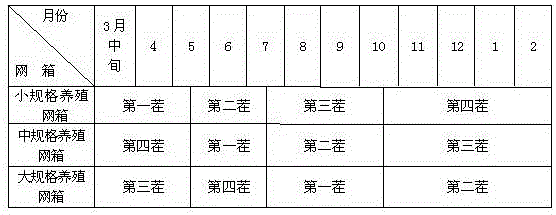Shallow sea cage apostichopus japonicus recirculating aquacultural facility and aquacultural method
A technology of recirculation cultivation and cultivation method, which is applied to the recirculation cultivation facilities and cultivation field of japonicus japonicus in shallow sea cages, which can solve the problems of failure to promote and apply on a large scale, slow growth of ginseng seedlings, inconvenient operation and management, etc., and achieve the growth environment and natural Improved feed source, increased growth rate, and balanced effects
- Summary
- Abstract
- Description
- Claims
- Application Information
AI Technical Summary
Problems solved by technology
Method used
Image
Examples
Embodiment Construction
[0029] The present invention is described in further detail below in conjunction with specific embodiment:
[0030] see figure 1, an embodiment of a shallow sea net cage imitating japonicus circulation cultivation facility according to the present invention, comprising several net cages, said several net cages comprising a small-scale culture net cage 3, a medium-size culture net cage 2, and a large-scale culture net cage 1 Three kinds of specifications, cultivating small, medium and large-sized ginseng seedlings respectively, described small-scale cultured net cage 3, medium-sized cultured net cage 2, and large-scale cultured net cage 1 are configured according to a certain ratio and interconnected as a culture unit, The quantity of the small-scale culture net cage 3 in each culture unit is less than the quantity of the medium-size culture net cage 2, and the quantity of the medium-size culture net cage 2 is less than the quantity of the large-scale culture net cage 1, and af...
PUM
 Login to View More
Login to View More Abstract
Description
Claims
Application Information
 Login to View More
Login to View More - R&D
- Intellectual Property
- Life Sciences
- Materials
- Tech Scout
- Unparalleled Data Quality
- Higher Quality Content
- 60% Fewer Hallucinations
Browse by: Latest US Patents, China's latest patents, Technical Efficacy Thesaurus, Application Domain, Technology Topic, Popular Technical Reports.
© 2025 PatSnap. All rights reserved.Legal|Privacy policy|Modern Slavery Act Transparency Statement|Sitemap|About US| Contact US: help@patsnap.com



